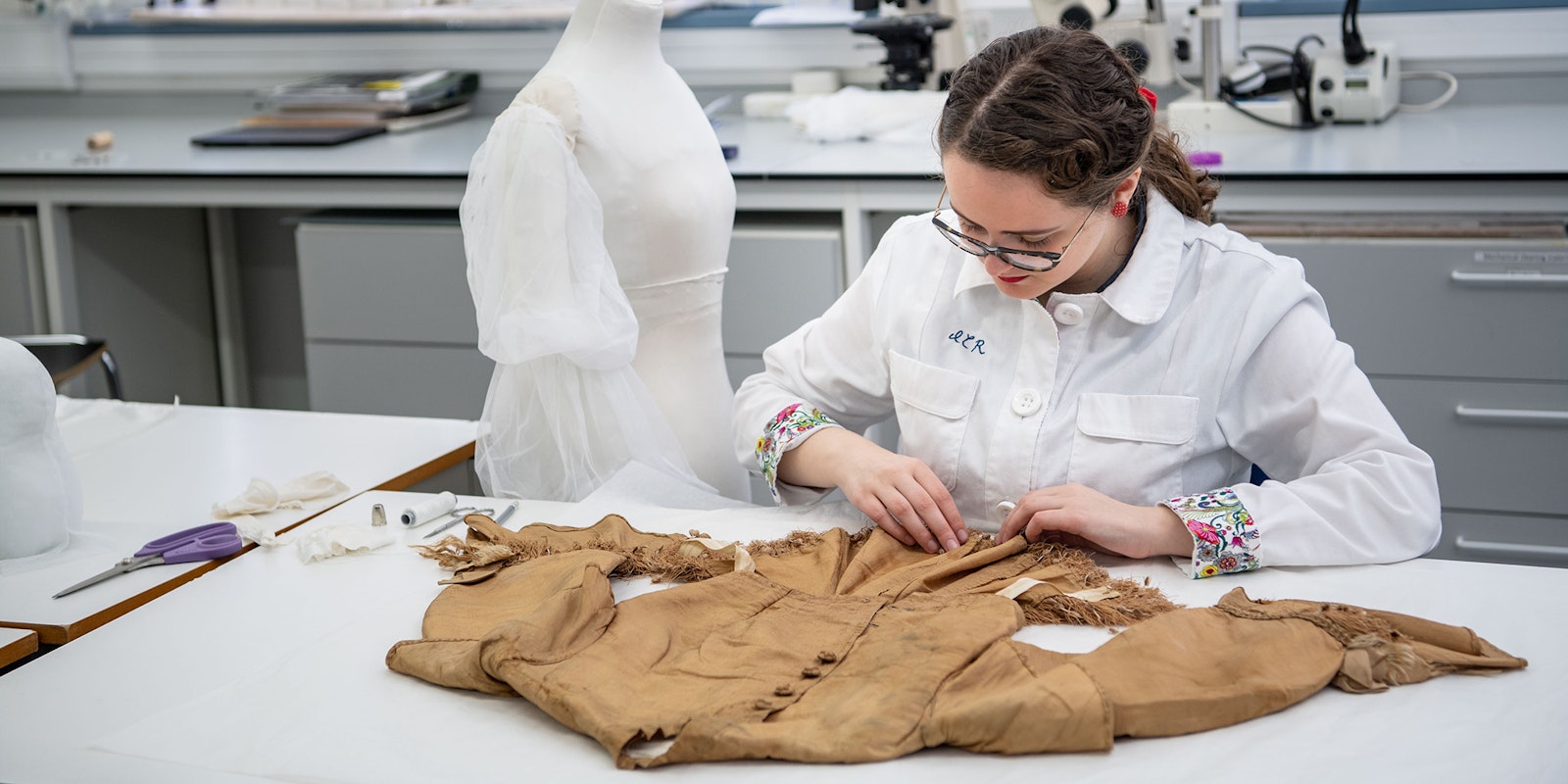In the Fall 2022 issue of PieceWork, author Natalie Dupuis writes about goldwork couching found on a number of historic examples, like the Fishmongers’ Pall from the 1500s which has been conserved and mounted by Zenzie Tinker Conservation. Here, PieceWork contributor and textile conservator Isabella Rossi explains what is meant by “textile conservation,” and when to consider enlisting the expertise of a professional to preserve your own precious textile treasures. —Editors
Textile conservation is the caring for and repairing of textile objects. These objects can be everyday garments or important historical flags. They can be a tapestry that is hundreds of years old or a quilt stitched a few decades ago. They can be art pieces worth thousands of dollars or a childhood toy that has great sentimental value. Textile conservators work on a wide variety of objects but always try to change or alter as little as possible and preserve the essential nature of the piece.
When should a textile be conserved?
Because textile conservators work on such a wide variety of objects, it can be difficult to know whether an object needs to be sent to a professional. My general advice is that if an object is valuable, it should be sent to a conservator. This value may be monetary but could also be sentimental, historical, or otherwise. For example, a wedding dress from thirty years ago may not be particularly old or financially valuable, but a conservator can help preserve this family treasure. However, the normal shirt that you wear once a week can be patched at home or by a seamstress.
 19th-century millinery fabric flowers undergoing conservation at Zenzie Tinker Conservation. ©Zenzie Tinker Conservation Ltd.
19th-century millinery fabric flowers undergoing conservation at Zenzie Tinker Conservation. ©Zenzie Tinker Conservation Ltd.
Conservators treat textiles that have a wide range of issues and damage. Some objects may need intensive work to support them structurally. Others may need only a gentle dusting or washing. Sometimes the object is in good condition, but a conservator is hired to advise on safe storage to prevent any future damage. No matter the condition of a textile, it’s a great idea to contact a conservator to repair any current issues and prevent future ones.
Where do you find a conservator?
One of the easiest ways to find a textile conservator is to look at the website of their professional organization in your country. In the United States, the American Institute for Conservation has a list of professional conservators which is searchable by their specialty, location, and services offered. The Institute of Conservation represents the United Kingdom and has a similar searchable list. The Australian Institute for the Conservation of Cultural Material also has a directory of local conservators.
 Mira Karttila, textile conservator at Zenzie Tinker Conservation, wet cleaning the head-cloth lining from an 18th-century bed from Leeds Castle. With kind permission of Leeds Castle Foundation, ©Zenzie Tinker Conservation Ltd.
Mira Karttila, textile conservator at Zenzie Tinker Conservation, wet cleaning the head-cloth lining from an 18th-century bed from Leeds Castle. With kind permission of Leeds Castle Foundation, ©Zenzie Tinker Conservation Ltd.
Another way to find a local conservator is to contact your local museum. Small museums often send their objects to private labs for conservation, so they will likely know the options in your area. Large museums may have conservators on staff, but they are unlikely to be able to treat your objects directly. However, the field of conservation is very small, so they will still be able to put you in touch with someone who can help. Hiring a professional conservator is an excellent way to ensure your textiles can continue to be enjoyed for generations to come.
Isabella Rossi is a textile conservator who trained at the University of Glasgow’s Centre for Textile Conservation and Technical Art History. She lives in Haddington, Scotland, where she spins, knits, and sews. She also writes about textile conservation and crafting on her blog at spinsterconservation.com.
Editors’ Note: Many thanks to UK-based Zenzie Tinker Conservation for the images. Established in 2003, Zenzie Tinker provides a complete range of conservation treatments for historic, modern, and contemporary textiles, as well as providing bespoke mounts and storage solutions.

